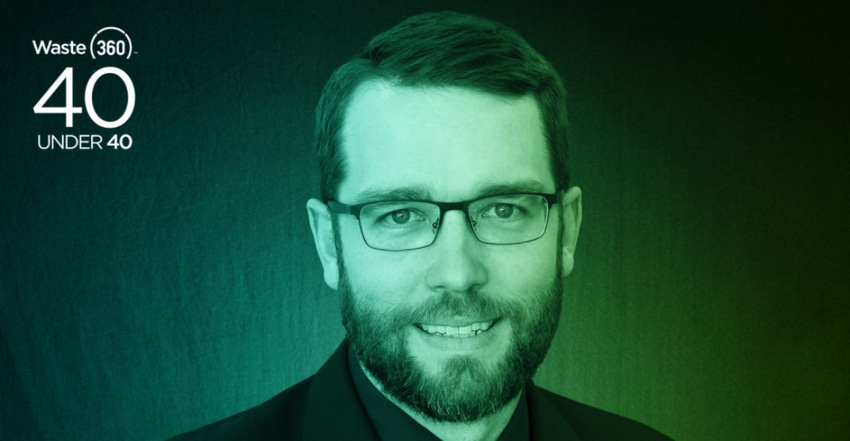NWRA's Kirk Sander Makes Safety a Value in the Waste and Recycling Industry
Safety is not a priority for Kirk Sander, Chief of Staff and Vice President of Safety and Standards at National Waste & Recycling Association (NWRA). It's a way of life. Safety is a crucial component to Sander's values that shine through his work at the organization, where he has been employed since 2018.

Safety is not a priority for Kirk Sander, Chief of Staff and Vice President of Safety and Standards at National Waste & Recycling Association (NWRA).
It's a way of life. Safety is a crucial component to Sander's values that shine through his work at the organization, where he has been employed since 2018.
"This is a great industry," Sander says. "I couldn't have done what I've done without the safety committee and how welcoming they were to walk me in and be open to actually getting to work and figuring out how we tackle these issues."
A stint at the White House and several other federal agencies prepared Sander for his current role. The Waste360 40 Under 40 recipient previously was chief of staff at the Occupational Safety and Health Administration (OSHA) where he advised the assistant secretary, engaged with companies and organizations. He also has held positions at the White House, NASA and the Department of the Interior.
Waste360 spoke with Sander about how his previous work at federal agencies and the National Safety Council has moved the waste and recycling industry forward.
Waste360: How did your work at OSHA and the National Safety Council aid you with your current role in the waste and recycling industry?
Sander: The biggest thing at OSHA was I knew that the work I was doing was bringing people home safely to their families every night. When I started here at NWRA, I was telling [CEO Darrell Smith] about that, and it really resonated with him and the work that he wanted me to do with the safety committee and the standards committees. It just really put that into focus that I'm going to be able to help bring people home. It really sucks on the days I get the Google Alerts about a fatality. I'm like, 'Okay, how can we prevent that?'
When I was at OSHA, [former OSHA Assistant Secretary of Labor] Dr. David Michaels a sent a letter about every fatality investigation that [explained] what was happening, and I read them all before he signed them. One of the things that really stuck with me was how there was always a way to mitigate them - except for one, and it was a lightning strike on a clear day in Florida. But out of all of those, there was always a way to mitigate it. So it's like, how do you make that happen? That is really what drives me here. I know that by what we're doing, we can make sure more people come home safely.
By understanding how OSHA works in the federal government, we can better position the industry so that regulations actually fit the industry and make the industry safer versus a one-size-fits-all for like for trucking, especially with what's coming up with the heat standard. We want to make sure that our industry is understood. Knowing how to navigate the behemoth of the federal bureaucracy is a skill in itself.
Waste360: NWRA has set a focus on distracted driving. Can you tell me about your work on this specific cause?
Sander: In most safety instances, you can control most of the environment, and you figure out how to use the hierarchy of controls to mitigate the risk. Right now, we don't have any tools to stop consumers from using their mobile phones when they approach our vehicles.
I mean, we now have almost 15 years of smartphones. We've been educating, educating, educating, and fatalities aren't coming down. The NHTSA fatality report came out in which 8 percent of those fatalities related to distracted driving, that were reported. And there's a fairly good understanding that it's underreported. So how do we get this to stop? Because clearly education isn't really changing people's behavior.
Waste360: Is there any safety data that haulers or companies in the industry can look or key performance indicators (KPIs) that can be measured to help lower their incident rates?
Sander: When you look at the federal data, you can't really tease out a garbage truck, or waste and recycling truck from a dump truck. Even when you look at news reports and how much the reporting just gets it wrong, where 'they're like a dump truck ran over...,' and then you look at it like,' oh, that's a trash truck.'
Trying to get good data specific for our industry is hard because we get lumped in with other big trucks, and where do you tease that out? That's why the [NWRA] is partnering with EREF to put together a data analysis to try to find where those holes are. We want to understand and to try to get that data because there are other industries that all that data is there. And they have fairly significant declines in their injury rates. We have to figure out how to measure it first.
About the Author(s)
You May Also Like




